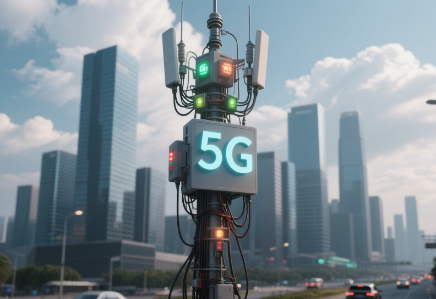The Evolution of 5G: Reshaping the Paradigm of Tiny Signal Transmission
1/15/2025 5:51:52 PM
In the rapid evolution of technology, 5G has emerged as a game - changer, especially in tiny signal transmission. As devices shrink while demanding faster, more reliable connections, 5G's features are revolutionizing micro - scale signal transfer. This article explores how 5G is redefining tiny signal transmission, examining its core technologies, real - world uses, and future challenges and opportunities.
The Technological Foundations of 5G and Tiny Signal Transmission
Higher Frequency Bands and Millimeter - Wave (mmWave) Technology
5G stands out for using higher frequency bands, like the 30 - 300 GHz mmWave spectrum. Compared to older mobile networks, mmWave offers wider bandwidths, perfect for tiny, high - speed devices such as wearables, IoT sensors, and small cameras. However, mmWave signals face issues due to their short wavelengths, being easily absorbed or scattered by obstacles. To counter this, 5G uses beamforming. This technique uses antenna arrays to direct signals, strengthening them for small devices. In a smart city, for example, numerous tiny sensors can use 5G's mmWave and beamforming to send real - time data on air quality and traffic accurately.

Massive MIMO (Multiple - Input Multiple - Output)
Another key 5G technology, massive MIMO, impacts tiny signal transmission. MIMO systems use multiple antennas to boost data speed and reliability. In 5G, massive MIMO takes it further with many antennas at base stations. For tiny devices, this enables better spatial multiplexing, allowing multiple devices to communicate on the same frequency without interference. In a busy IoT network, like a factory floor full of sensors, massive MIMO ensures efficient signal transmission for all.
Real - World Applications: Transforming Industries with 5G - Enabled Tiny Signal Transmission
Healthcare: Revolutionizing Wearable and Implantable Devices
In healthcare, 5G is enhancing tiny medical devices. Wearables like smartwatches can now measure more vital signs. With 5G, they can send real - time data to doctors, helping monitor chronic patients. Implantable devices like pacemakers also benefit. 5G ensures secure and seamless communication between these devices and external systems, improving patient care.
Internet of Things (IoT): Enabling a Hyper - Connected World
5G is crucial for the IoT's full potential. Tiny IoT sensors, used in various applications from smart homes to agriculture, rely on 5G's low - latency and high - bandwidth to send data in real - time. In a smart home, sensors can detect conditions and trigger actions quickly. In agriculture, soil sensors can help farmers make better decisions, increasing yields and reducing waste.
Manufacturing: Driving Industry 4.0 Forward
In manufacturing, 5G is pushing Industry 4.0. Tiny sensors and actuators in equipment use 5G to communicate with each other and control systems, creating an automated environment. In a car plant, sensors can monitor production and send data instantly for real - time adjustments. 5G - enabled AR and VR also aid in training and maintenance.
Challenges and the Road Ahead
Infrastructure Requirements
Widespread 5G adoption for tiny signal transmission needs significant infrastructure investment. 5G base stations, especially mmWave ones, require a denser network due to shorter ranges. Installing and maintaining this infrastructure demands specialized skills, posing challenges in some areas.
Energy Consumption
5G devices, with high - power components, consume more energy. For battery - powered tiny devices, this is a major drawback. Researchers are working on energy - efficient 5G tech, like low - power chips and energy - harvesting for small devices.
Security and Privacy Concerns
As 5G expands the number of connected devices, security and privacy risks grow. Tiny devices, with limited resources, are vulnerable. Developing strong security protocols and encryption, along with regulatory frameworks, is essential to protect data.
In conclusion, 5G is reshaping tiny signal transmission. Its technologies enable new applications and industry transformations. Despite challenges, R&D and infrastructure investments are key to unlocking 5G's full potential in this area. As 5G evolves, more innovations will enhance our connected world.
